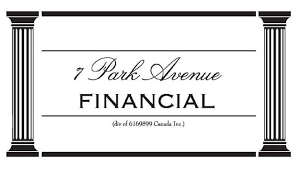|
Why Accounts Receivable Factoring Outperforms Traditional Loans
Cash Flow Crisis? How Accounts Receivable Factoring Unlocks Trapped Capital
YOUR COMPANY IS LOOKING FOR INVOICE DISCOUNTING AND FACTORING FINANCING IN CANADA!
ACCOUNTS RECEIVABLE FINANCING SOLUTIONS
You've arrived at the right address! Welcome to 7 Park Avenue Financial
Financing & Cash flow are the biggest issues facing businesses today
ARE YOU UNAWARE OR DISSATISFIED WITH YOUR CURRENT BUSINESS FINANCING OPTIONS?
CALL NOW - DIRECT LINE - 416 319 5769 - Let's talk or arrange a meeting to discuss your needs
EMAIL - sprokop@7parkavenuefinancial.com

"Cash flow is the lifeblood of business, and factoring is like a transfusion when the patient needs it most." — Alan Miltz, Cash Flow Story Founder
ACCOUNTS RECEIVABLE FINANCING WORKS
Accounts Receivable loan solutions in Canada have significant advantages for Canadian business owners/financial managers seeking to improve (and accelerate) their overall cash flow/working capital situation.
A/R is typically one of the largest assets on a company's balance sheet.
2 Uncommon Takes on Accounts Receivable Factoring Loans
- Beyond Emergency Funding: While many view factoring as a last-resort solution, strategic businesses integrate it into their regular financial toolbox, using factoring selectively to accelerate growth initiatives without taking on traditional debt.
- Customer Relationship Enhancement: Contrary to concerns about damaging client relationships, professional factoring companies often improve collection processes, providing more consistent follow-up and professional interactions that can strengthen your business reputation.
RECEIVABLE FINANCING PROBLEMS AND SOLUTIONS
Shortages in ongoing cash needs, safe to say, leave owners somewhat 'restless'!
That's why the right accounts receivables financing/accounts receivables loan solution is critical for invoice financing for trade receivables in those unpaid invoices. Let's dig in.
Invoice financing is, in essence, a form of asset-based credit line.
They are the 'bank alternative' and allow you to leverage A/R assets to maximize cash flow. Many firms can't access traditional bank loans for a business credit line for various reasons—that's why AR financing is so popular. By the way, that eliminates the need for more equity financing, which might dilute ownership.
WHY THE ACCOUNTS RECEIVABLE FINANCING SOLUTION?
Factoring and invoice discounting companies are playing a larger role in the overall climate of business financing. This is coming off very challenging years (2008-2009), when the global meltdown severely hampered small and medium-sized firms' ability to raise business loan financing for operating capital needs.
And let's not talk about COVID/ Pandemics! Or Tariffs!
ENTER THE ACCOUNTS RECEIVABLE FINANCING PROVIDER
Borrowing via accounts receivable financing is a very simple way of leveraging assets without taking on additional debt to your balance sheet and converting accounts receivables into cash. This allows your firm to reduce payables and invest in ongoing growth and profits while covering day-to-day business expenses.
Those are all great positive aspects of working capital benefits—the question remains: is there any 'downside'?
The reality is that there is no single perfect solution for any firm considering working capital financing—every method of financing your Canadian business has pros and cons.
RECEIVABLES FINANCING & CAVEAT EMPTOR
So our recommendation is simply, 'caveat emptor'—or, to translate that Latin phrase into plain English, investigate invoice discounting and factoring and determine if the benefits of that type of financing can help you survive and prosper!
When you secure an invoice discounting or factoring facility, you have new flexibility in a number of areas—you have additional cash, for one thing. The phrase 'cash is king' never meant so much in today's competitive business environment.
Many Canadian firms have seized the day and taken the global financing challenge head-on and in effect, capitalized on invoice financing availability -
They have acquired a competitor, merged with a synergistic partner, or, in some cases, engineered a management buyout. Factoring or invoice discounting and full asset-based lines of credit can assist you in any of those strategies.
Funds acquired through a factoring facility are more often than not simply used to reduce payables or help to reverse a business's downward trend after a very difficult year.
In some cases, traditional financing has been curtailed, and leverage of cash flow via factoring has emerged as the only option for business survival.
In the direst cases, factoring or a full asset-based line of credit has helped many a firm survive the bankruptcy or reorganization process.
However, it is essential to know that some of Canada's largest and most successful public and private companies finance A/R through non-bank alternative finance solutions.
Why does A/R financing work?
It's because it immediately frees up cash in your receivables—this helps to increase sales and allows your firm to invest in additional inventory. Of course, the cycle continues as this inventory is again converted into a receivable, generating further profits for your firm.
Many times, smaller and medium-sized firms cannot take advantage of the strategies that larger firms utilize to liquidate receivables -
They don't have the funds to invest in corporate credit and collection personnel or sophisticated cash management and planning. So, utilizing factoring and invoice discounting issues such as being 'too small, or 'too new a firm‘ holds little relevance.
FINANCING RECEIVABLES
Many Canadian firms adopt formal U.S. or European methods of factoring. Careful investigation, best achieved by working with a trusted and credible advisor, will allow you to find a facility that meets your long-term needs.
In a perfect world, we recommend that clients seek a facility that provides maximum loan-to-value on receivables, can incorporate inventory as an additional financing component, and, most importantly, allows you to bill and collect your receivables as your customer pays.
Confidential Receivable Finance is our recommended solution for receivable loan financing for outstanding invoices from accounts receivable financing companies. It allows you full control over, bill, and collect on your receivables, utilizing and paying for the amount of financing you need when you need it and minimizing financing company contact.
Case Study: Factoring Transforms Growth Obstacles
When a Canadian mfr. faced a critical opportunity to supply components for a significant infrastructure project, their excitement quickly turned to concern. The $1.2 million order required significant upfront material and labour investments, but payment terms demanded 60-day invoicing.
Despite having a healthy business, the company's cash reserves couldn't support this scale of production without compromising existing operations. Traditional bank financing would take weeks to approve and have no guarantee of success.
The company converted their existing invoices into immediate capital within 48 hours by implementing accounts receivable factoring. This allowed them to:
- Purchase necessary materials without depleting operational funds
- Hire additional temporary staff to fulfill the large order
- Maintain regular business operations without interruption
- Negotiate early payment discounts with suppliers, offsetting factoring costs
The result? The company successfully fulfilled the contract, establishing itself as a reliable supplier for significant projects. Their revenue grew by 37% that year, with the infrastructure client becoming a recurring customer. Without the immediate working capital provided by factoring, this transformative opportunity would have remained beyond reach.
KEY TAKEAWAYS
- Asset Conversion – Factoring transforms frozen capital in unpaid invoices into immediate liquid assets, solving the fundamental timing mismatch between service delivery and payment receipt.
- Credit-Based Approval – Qualification centers primarily on your customers' creditworthiness rather than your business credit score, making it accessible to startups and businesses with challenged credit histories.
- Scalable Funding – As your sales increase, your available funding automatically grows in parallel, eliminating the need for constant loan renegotiations common with traditional financing.
- Outsourced Collections – Professional management of accounts receivable reduces administrative burden while typically improving collection rates and customer payment behavior.
- Risk Mitigation – Many factoring arrangements include credit protection (non-recourse factoring), shielding your business from losses due to customer bankruptcy or insolvency.
CONCLUSION - RECEIVABLE FINANCING SOLUTIONS
Is factoring or invoice discounting the optimal solution for your firm? The accounts receivable financing company application is simple and basic.
Call 7 Park Avenue Financial, a trusted, credible, and experienced Canadian business financing advisor who can help you eliminate the 'restless' feeling that comes with funding challenges for small and medium-sized businesses in Canada and ensure your business growth.
FAQ: FREQUENTLY ASKED QUESTIONS / PEOPLE ALSO ASK
What is AR financing?
A/R Financing allows companies to receive early payment on outstanding invoices through a factoring company.
This process is also referred to as invoice factoring.
Companies can borrow against all or some of their unpaid invoices to improve cash flow.
Immediate cash is provided as sales are generated, helping with working capital needs, especially for small businesses.
Business owners must weigh the access to capital versus the cost of capital when choosing between accounts receivable financing and factoring.
Although this method is more expensive, it ensures the company has sufficient cash flow as it generates revenue.
How does accounts receivable factoring differ from traditional bank loans?
Unlike bank loans that create debt, factoring converts your existing assets (invoices) into immediate cash. There's no repayment schedule because it's not a loan—it's a money advance already earned, with fees based on invoice value rather than interest rates.
What types of businesses benefit most from accounts receivable factoring?
Businesses with B2B models, significant accounts receivable balances, and customers with good credit standing benefit most. This includes manufacturers, wholesalers, distributors, transportation companies, staffing agencies, and professional service firms selling to creditworthy commercial clients.
How quickly can I receive funds through factoring?
Most factoring companies provide initial funding within 24-48 hours after account setup. Once established, funding typically occurs within hours of invoice submission, creating a reliable and predictable cash flow system.
What percentage of my invoice value will I receive?
Most factoring arrangements provide an immediate advance of 80-90% of the invoice face value, with the remaining balance (minus the factoring fee) paid when your customer settles the invoice.
Will my customers know I'm using a factoring service?
While notification factoring (where customers are aware) is common, some factors offer non-notification or confidential factoring arrangements where the relationship remains private. This varies by provider and specific agreement terms
How can accounts receivable factoring improve my business cash flow?
Eliminates 30-90 day waits for customer payments
Provides predictable, reliable funding based on sales
Creates immediate liquidity for operational expenses
Enables timely supplier payments, often securing early payment discounts
Supports payroll obligations without timing concerns
What advantages does factoring offer over traditional business loans?
Approval based on customer creditworthiness, not your business credit
No debt creation on your balance sheet
Funding grows automatically with your sales
No collateral requirements beyond the invoices themselves
Faster approval and funding processes than conventional loans
Can factoring help my business during rapid growth phases?
Scales immediately with increased sales without renegotiation
Provides working capital to fulfill larger orders
Supports inventory purchases for expanded production
Enables staffing increases without cash flow constraints
Prevents growth-induced cash crunches common with traditional financing
Is accounts receivable factoring suitable for seasonal businesses?
Accommodates natural business cycles without fixed payment obligations
Provides increased capital during peak seasons when needed most
Reduces or eliminates funding during slower periods automatically
Creates predictability in otherwise variable cash flow environments
Offers flexibility not available with traditional term loans
How does the factoring process impact my customer relationships?
Professional invoice management often improves collection processes
Many factors offer white-label services maintaining your branding
Reduces payment delays through consistent follow-up
Provides clear payment documentation and reconciliation
Can include credit monitoring of customers, reducing your risk
What initial documentation do I need to apply for accounts receivable factoring?
Business formation documents (articles of incorporation, business licenses)
Recent accounts receivable aging reports
Sample invoices and contracts with your customers
Bank statements from the past 3-6 months
Customer list with contact information for verification purposes
How do factoring companies evaluate which invoices to fund?
Assessment of customer creditworthiness rather than your business credit
Verification that goods or services were delivered satisfactorily
Confirmation that invoices aren't encumbered by liens or other claims
Analysis of customer payment history and industry reputation
Validation of invoice documentation and payment terms
Is there a minimum invoice amount or volume requirement for factoring?
Most factors require minimum monthly invoice volumes ($10,000-$50,000)
Individual invoice minimums typically range from $500-$5,000
Higher volume businesses generally receive more favorable rates and may often be part of a full asset based lending agreement
Some specialized factors work with lower volumes in specific industries
Consolidation of smaller invoices may be possible with certain providers
Can my business use factoring for only specific customers or invoices?
Selective factoring options allow choosing which invoices to factor
Some factors require factoring all invoices from specific customers
Spot factoring services enable one-time invoice conversion
Contract terms vary widely between factoring companies
Custom arrangements can often be negotiated based on business needs
What happens if my customer never pays the factored invoice?
Responsibility for customer non payment and credit risk on a company's accounts receivable depends on whether your agreement is recourse or non-recourse
Non-recourse factoring provides protection against customer insolvency
Recourse factoring requires you to buy back unpaid invoices after a set period
Disputes regarding delivery quality may still be your responsibility re cusotmer payment timelines
Many factors offer hybrid arrangements with specific protection parameters
CITATIONS/ MORE INFORMATION
Canadian Lenders Association. (2023). "Alternative Financing Growth Report." Canadian Lenders Association Annual Review, pp. 34-42.
Thompson, R. & Williams, S. (2022). "Working Capital Management Strategies for SMEs." Journal of Business Finance, 45(3), 287-302.
Bank of Canada. (2023). "Small Business Financing in Canada: Challenges and Opportunities." Economic Analysis Report, Q3 2023.
Fraser Institute. (2022). "Alternative Financing Models and Economic Growth." Economic Freedom Research, Annual Report 2022.
Statistics Canada. (2023). "Cash Flow Challenges in Canadian Small and Medium Enterprises." Business Conditions Survey, Q2 2023.

' Canadian Business Financing With The Intelligent Use Of Experience '
STAN PROKOP
7 Park Avenue Financial/Copyright/2025

ABOUT THE AUTHOR: Stan Prokop is the founder of 7 Park Avenue Financial and a recognized expert on Canadian Business Financing. Since 2004 Stan has helped hundreds of small, medium and large organizations achieve the financing they need to survive and grow. He has decades of credit and lending experience working for firms such as Hewlett Packard / Cable & Wireless / Ashland Oil
|